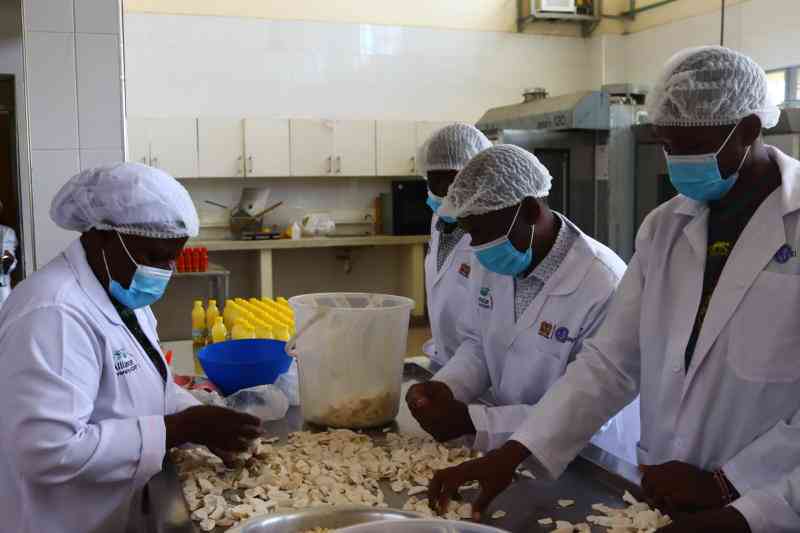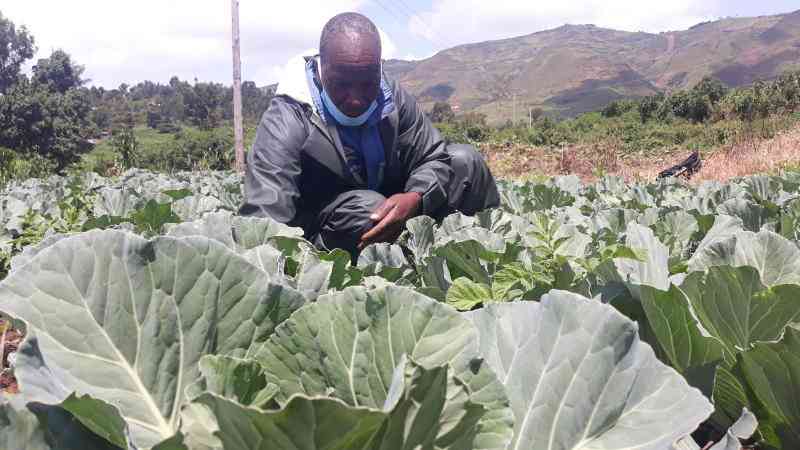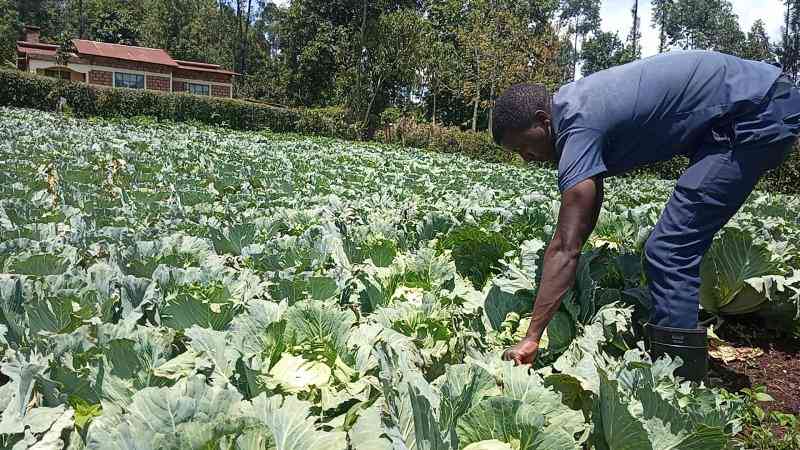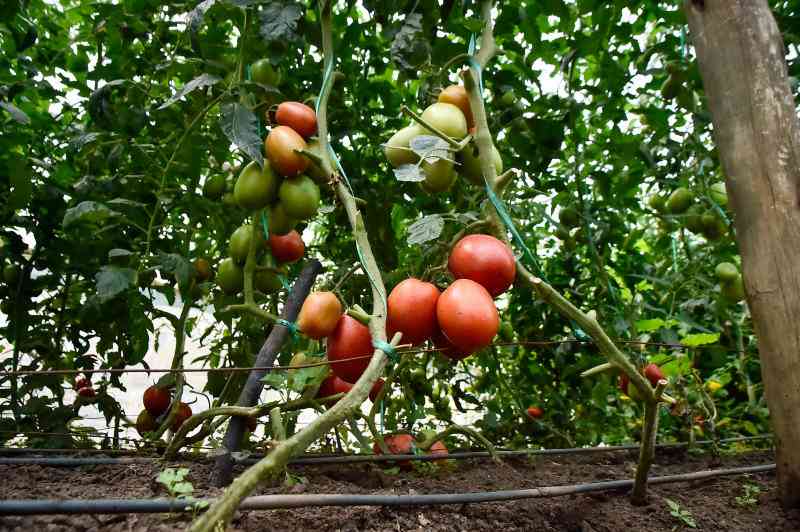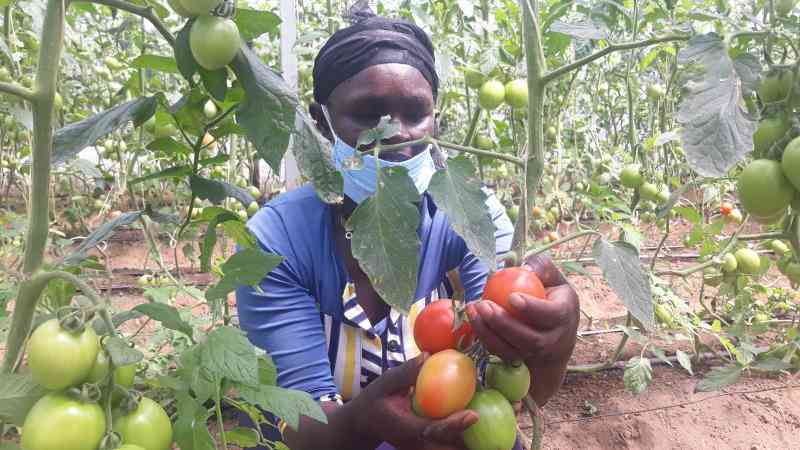
A tomato farmer on his farm in Nyeri. [Kibata Kihu, Standard]
Growing tomatoes is easy only if you have mastered all the tips and tools required. With the proper knowledge, anyone can grow big tomato plants. Farmers who fail at producing tomatoes in most cases ignore the simple tips that guarantee success.
Right Variety
Choose varieties that will mature completely during your growing season. Before buying seeds or tomato seedlings, take note of the 'Days to maturity' line and only choose varieties that stand a chance to mature in the time you have for your particular growing season. Selecting tomato varieties that meet the many, sometimes conflicting, requirements of marketability, production potential, and disease resistance does require careful consideration of variety characteristics and evaluation of the specific operation and growing conditions. However, selecting the correct varieties can be an important factor in determining the success and profitability of an operation.
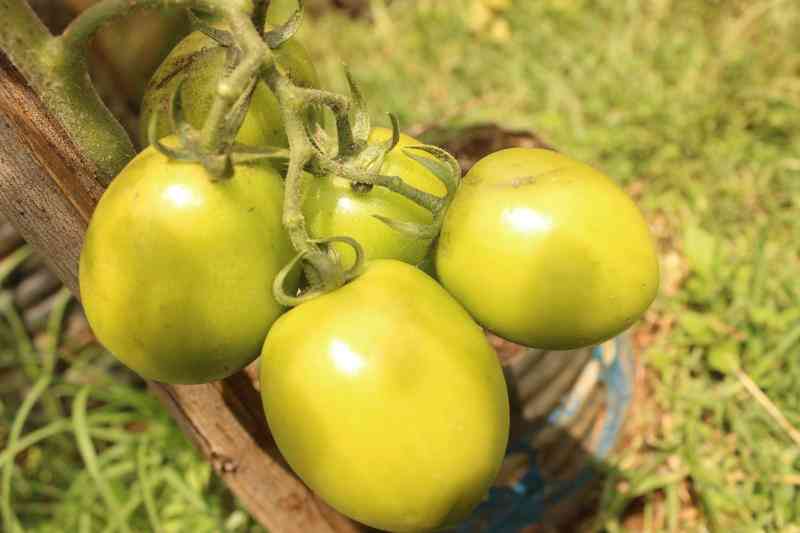
Tomato fruits inside Samson Tanui's garden at Ngeria, Uasin Gishu County. [Christopher Kipsang, Standard]
Nutrients
Tomatoes require plenty of sunlight and nutrients to thrive. Poor soil nutrient is one of the reasons most farmers fail in tomato production. The plants require a lot of nitrogen to grow strong and develop big fruits. It is therefore recommended that you start with rich, fertile soil. If possible, grow tomatoes on raised beds mixed with compost. You may supplement with organic fertilisers to increase yields. Full sun is also important.
Watering
Tomato plants require water to thrive. Tomatoes grown in the open fields will most often get moisture from rain. However, in cases of drought and intense heat supplemental watering will be necessary. You do not need to guess when your plants require water. Simply stick your index finger into the soil, if it feels dry, it's time to water. If it's moist, no need to water. Observe your plants for any signs of water stress for example wilting. Cracked tomatoes are usually caused by inconsistent watering. If the tomato isn't getting enough water, then suddenly gets a huge surge of water, the fruit will balloon up too quickly, causing cracks. These cracks usually heal over before harvest time, and while they're not pretty, they're not harmful.
Pruning
Pruning helps tomato plants to thrive. Tomato plants produce suckers, extra branches that grow out between the main stem and tomato branches. If these suckers are allowed to grow, they crowd out other branches shielding them from accessing sunlight. These can result in poor air circulation, fungal diseases and slow ripening of fruits. Removal of extra branches improves the size of the fruits per plant. It also makes the plant healthier and strong, making it last the entire season.
Pest and disease control
To produce that perfect tomato, be alert. Keep an eye on your plant's health, look for larvae and other insects, and watch for signs of disease. And if you find them, seek advice on what to do. The first task when facing an unhappy tomato plant is to diagnose the problem. Look out for symptoms on the fruits, stems, leaves and roots. Holes in leaves could be an indicator of a pest attack. Scout for garden pests, during the day and at night and treat them accordingly. Black leaves could be an indicator of tomato blight.
To prevent blight, be sure to rotate the location of your tomato bed every year, give plants lots of room to breathe by not planting too close together, and spray with fungicide throughout the growing season. Tomatoes on the vine sometimes get black spots on the bottom, called blossom end rot. This is usually caused by a calcium deficiency. A good tomato fertiliser will help the issue.
If you see an insect on or near your tomato plants, don't rush for the nearest insecticide. Many insects are beneficial to the garden or at least neutral. That insect may be feeding on the very pests you're having trouble with. Even if you're looking at an enemy, one insect does not make an infestation. It's best to identify the intruder and the level of damage it's causing before spraying.
 The Standard Group Plc is a multi-media organization with investments in media platforms spanning newspaper print
operations, television, radio broadcasting, digital and online services. The Standard Group is recognized as a
leading multi-media house in Kenya with a key influence in matters of national and international interest.
The Standard Group Plc is a multi-media organization with investments in media platforms spanning newspaper print
operations, television, radio broadcasting, digital and online services. The Standard Group is recognized as a
leading multi-media house in Kenya with a key influence in matters of national and international interest.




